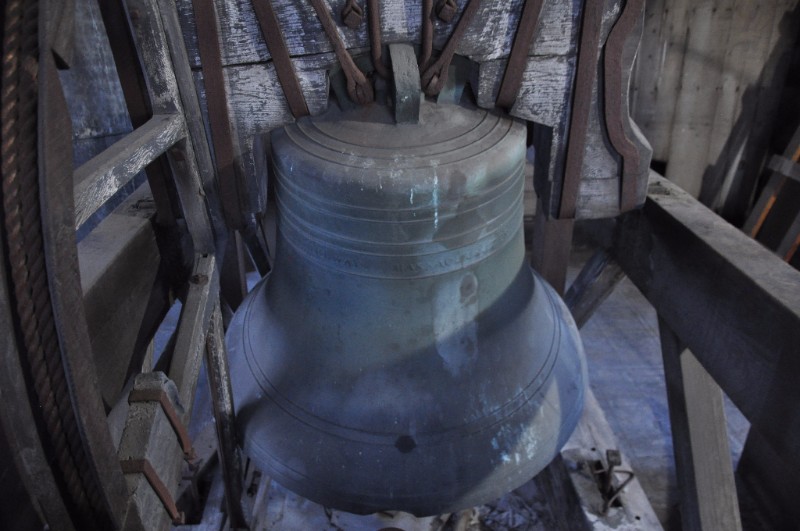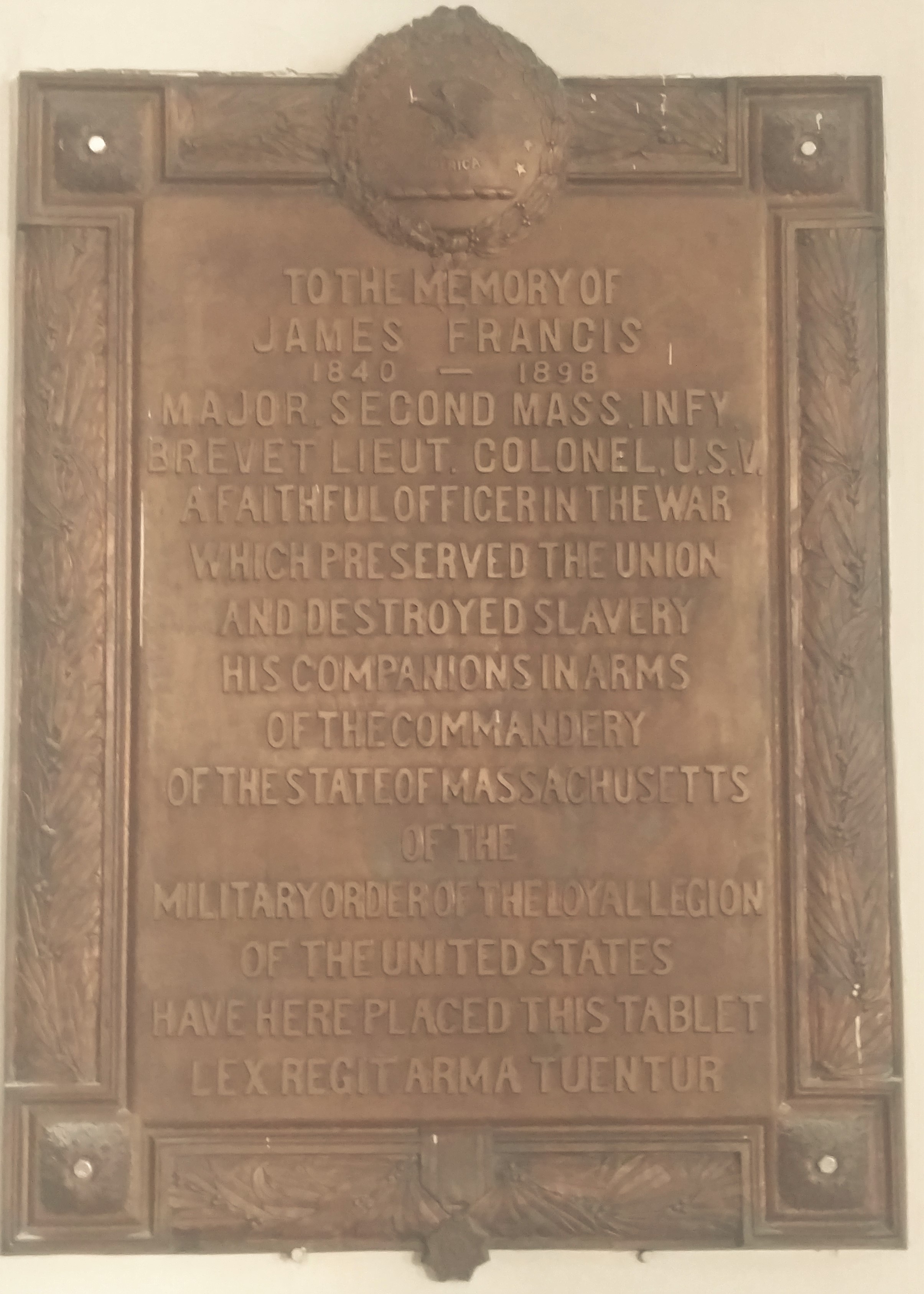CHRIST CHURCH UNITED, UCC
Text...
Historical Reflection by Barbara F. Reed
Historian and former member of Christ Church United in Lowell
The history of Christ Church United in Lowell is complicated because the church is descended from many of the numerous Congregational churches which once existed in Lowell. At the turn of the century there were ten.

Origins
By the early 1840’s St. Anne’s Episcopal Church was becoming overcrowded. Rev. Amos McCoy, assistant to the rector, began to hold services in a hall in a downtown building. Rev. McCoy was anxious to organize and build a new church. In spite of opposition to the plan, the Proprietors of St. Luke’s Episcopal Church organized in 1841 and Rev. McCoy announced that there would be a subscription to raise money to build a new Episcopal Church. The lot on which Christ Church United now stands was purchased from Thomas and John Nesmith, the developers of the Belvidere section of the city, and work on the building began. Since the “audience room”, which we today call the “sanctuary”, was not completed, St. Luke’s held services in the vestry located in the basement of the building, which now houses the heating pipes.
In the early days of Lowell, it was customary for the mill owners to give financial aid toward building new churches, but in this case the owners were vehemently opposed to a second Episcopal church in the city, and without their support, St. Luke’s was doomed.
At about the same time the Congregational churches of the city, of which there were four, were also overcrowded. It was decided that the John Street Congregational Church would send out a colony to the suburb of Belvidere to start a new Congregational church. The unfinished St. Luke’s building was purchased and completed and the new Congregational church, called the High Street Congregational Church, was organized in 1846.
Although the High Street Congregational Church had a few well-to-do members, it was not a wealthy church and was continually in financial trouble. In 1856, the minister left because he wasn’t being paid. In addition to its financial problems, the new church wasn’t drawing new members as those in the neighborhood who belonged to the downtown Congregational churches preferred to remain there and walked right by the front door of the High Street Church on their way downtown. The people of the High Street Church became very discouraged and in 1857 a proposal was made to sell the church, perhaps back to the Episcopalians. That proposal was defeated by just one vote. If the vote had gone the other way, we wouldn’t be at CCU today! Later in 1857, Rev. Owen Street was called as minister. He was very popular with the congregation and things turned around. Rev. Street served the church for 30 years until his death in 1887.
In 1859, a loan was taken out to make extensive repairs and renovations. Balconies were added, as well as skylights and interior arches.
During World War I, fuel was scarce so, beginning in January of 1918, the First Unitarian Church and the High Street Church decided to meet together for worship at the High Street Church during the winter months. Later that year, the two churches agreed to unite for worship under the name of All Souls Church (Congregational-Unitarian) maintaining their separate organizations but forming a new corporation to hold the real estate. Finally, in 1921 the two churches became one.
The First Unitarian Society had as members some of the city’s wealthiest and most influential citizens and has been mentioned, the High Street Church had a history of money problems. Therefore, it was said that the two churches had what was necessary for a good marriage. The High Street Church had the building and the First Unitarian Church had the money.
In 1919, the two churches decided to undertake major improvements to the building. The length of the building at that time was from the East Merrimack Street entrance to a wall at the front of the sanctuary. Among the changes was the erection of the parish house. The floor was lowered, thus eliminating the vestry below, which was no longer needed because of the new parish house. Another major part of the renovation was the addition of the chancel at the front of the sanctuary and the installation of the stained glass windows in the chancel as well as those in the side aisles. Our renowned Skinner organ was also installed at that time.
In the period leading up to 1969, there were great changes in the City which affected all of the churches of Lowell. The textile mills moved south or closed. Young people left the City for the armed forces or college and didn’t return. Families began moving to the suburbs. As a result of these changes, membership in the Congregational churches of the City declined.
The year 1961 brought a national denominational change when the Evangelical & Reformed Church and the Congregational Christian Church merged to form the United Church of Christ. This merger followed a prolonged period of opposition by many Congregational churches, including those in Lowell. One of the reasons for the opposition was the fear of the loss of independence by the local churches. Local churches had the option of joining the new denomination, and in the 1960’s the Lowell churches voted on the matter. The First Congregational Church voted against, All Souls Church voted in favor, and the Highland Congregational Church abstained.
After a great deal of soul-searching and long discussions, Christ Church United in Lowell was incorporated November 16, 1969, a union of All Souls Church, the Highland Congregational Church, which was located on Westford Street where the Montefiore Synagogue now stands, and the First Congregational Church on Merrimack Street, the present home of the Smith Baker Center.
The Congregational movement in Lowell began on June 6, 1826, with the organization of the First Congregational Churchand it continues today in Christ Church United in Lowell. We, as Christ Church United, are the product of twelve Lowell churches, ten Congregational and two Unitarian, and are the beneficiaries of their tangible and intangible gifts. We honor our church ancestors and the sacrifices they made in the past which have allowed CCU to become a vibrant 21st Century congregation.
